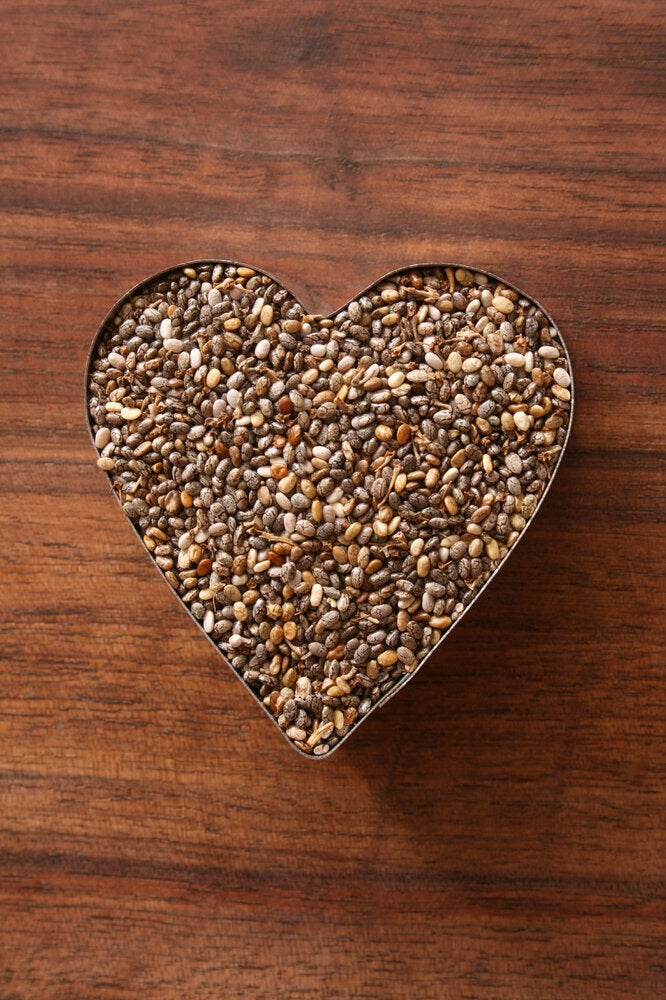
Flax seeds burst onto the nutritional scene a few years ago, and now you can find them everywhere, including flour, bread and cereal. But chia is the new star in town: this tiny seed was important to Mayans and Aztecs and is becoming increasingly popular in modern times. It's been studied for its effects on weight loss, diabetes, and heart health, though results are still preliminary.
So which seed should you choose? We break it down below. All nutritional information is based on 1 ounce (28 grams) of dried seeds.
Fibre: Both of these seeds are a great way to get more fibre in your diet, but chia has the edge: an ounce gives you 10.6 grams of fibre, or 42 per cent of your recommended daily intake, versus 7.6 grams and 31 per cent for flax.
These seeds also provide different types of fibre. Chia is one of the richest sources of soluble fibre, the kind that takes longer to get through your digestive tract, which adds bulk to stool and slows glucose absorption. The fibre in flax, however, is mostly soluble fibre, which has been tied to lower LDL (bad) cholesterol — in fact, research has shown an association between daily flax consumption and lower cholesterol.
Fat: Being seeds, both of these are rich in fats. There's a bit more in flax, with 11.8 grams per serving, but chia has 8.6 grams. However, these are healthy fats, including omega 3 fatty acids. A serving of chia has 4915 milligrams of those, while flax has 6388 milligrams.
Lignans: Lignans are phytochemicals that are linked to reduced cancer risk; in particular, research has suggested that they may have a role in reducing the risk of breast and prostate cancers. Flax is a good source of lignans. Chia seeds also have lignans, but are not as rich a source as flax.
Protein: Sprinkling these tiny seeds onto your food can up your protein intake. Chia and flax have about the same amount per ounce, at 4.4 grams and 5.1 grams respectively. However, chia is one of just a few plant sources that is a complete protein, meaning that it contains all of the needed protein-forming amino acids. It's not necessary to only eat complete proteins if you get protein in your diet from a variety of sources, but it helps!
Calcium: An ounce of flax seeds provides seven per cent of your daily value (DV) of bone-healthy calcium, but chia seeds have more than double: 177 milligrams or 18 per cent of your DV.
Phosphorus: Calcium isn't the only mineral that's good for your health — phosphorus is also essential for the formation of bones and teeth. An ounce of flax will give you 180 milligrams of flax or 18 per cent of your recommended daily intake, but chia will give you a whopping 27 per cent with its 265 milligrams of phosphorus.
Copper: Copper is a trace mineral important for red blood cell formation, and both chia and flax are sources. Chia, however, has just a smidge with three per cent of the recommended daily intake, while flax has 17 per cent.
How To Eat: An important note about flax seeds: they should be eaten ground, as the whole seed is likely to pass through you undigested, taking all its benefits with it. If you're going to store ground flax, make sure you do so in the fridge in order to prevent oxidation, which will make it taste rancid. Your best bet is to buy flax whole and grind small amounts at a time — a coffee grinder works well for this. Chia seeds, however, can be eaten ground or whole.
Verdict: Flax is a seed worth eating, but chia has the upper hand here thanks to its higher numbers for fibre, calcium, and phosphorus, as well as because it's a complete protein. But all seeds have antioxidants — and different ones — so it's great to get a mix of them in your diet.
